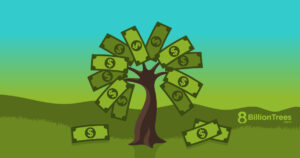How Can Carbon Credits Be Sold?
Carbon Credits Be Sold
Carbon credits are emissions reductions that can be purchased for a set price. They correspond to a certain vintage and delivery date and can be used for several purposes, including offsets for future greenhouse gas emissions. They are also a valuable asset in reducing pollution and improving the welfare of local populations. They can be sold to businesses or individuals.
There are many factors that go into determining the price of carbon.credit. For example, the quality, size, and geographic location of the carbon credits are important. The market for carbon credits is competitive and growing quickly. However, it can be difficult to determine the exact value of the carbon credits. For that reason, the Gold Standard advocates that prices of carbon credits be aligned with the social and economic value of carbon.

Carbon credits can be sold to a number of different companies or individuals. They can be bought and sold in order to offset emissions from industrial production, delivery vehicles, and travel. In addition, carbon credits can be sold to companies that want to use them to reduce greenhouse gas emissions. However, some businesses find that selling carbon credits is not worth it.
How Can Carbon Credits Be Sold?
Carbon offsets are also produced by landowners who are willing to grow crops for cash. The producers of these carbon offsets are paid $15 per tonne of carbon that they remove from the atmosphere. This can mean profits of $15,000 or more per year. So, while carbon credits are still in their infancy, they are still a great way to offset emissions and reduce greenhouse gas emissions.
Carbon offset projects are important in reducing the carbon footprint of individuals, businesses, and nations. The goal of these projects is to reduce existing carbon emissions while preventing future emissions. The carbon market for carbon offsets is one part of a larger carbon market that aims to reduce global emissions to zero. It’s important to note, however, that offset projects typically involve a combination of carbon avoidance and carbon removal.
Initially, the voluntary market for carbon credits began as part of the UN Kyoto Protocol, which was the first global agreement to reduce CO2 emissions. The Clean Development Mechanism (CDM) facilitated the development of the market by allowing industrialized countries to plant trees in the tropics. Most trading has been done on a voluntary basis, and a thriving industry has grown up around certifying and marketing carbon credits.
The international carbon credit market allows countries with surplus units to sell them to countries that exceed their target under the Kyoto Protocol. Carbon projects can be created by national governments or operated by companies within the country. However, most transactions are performed through the private sector. These credits are the products of a complex and complicated process.